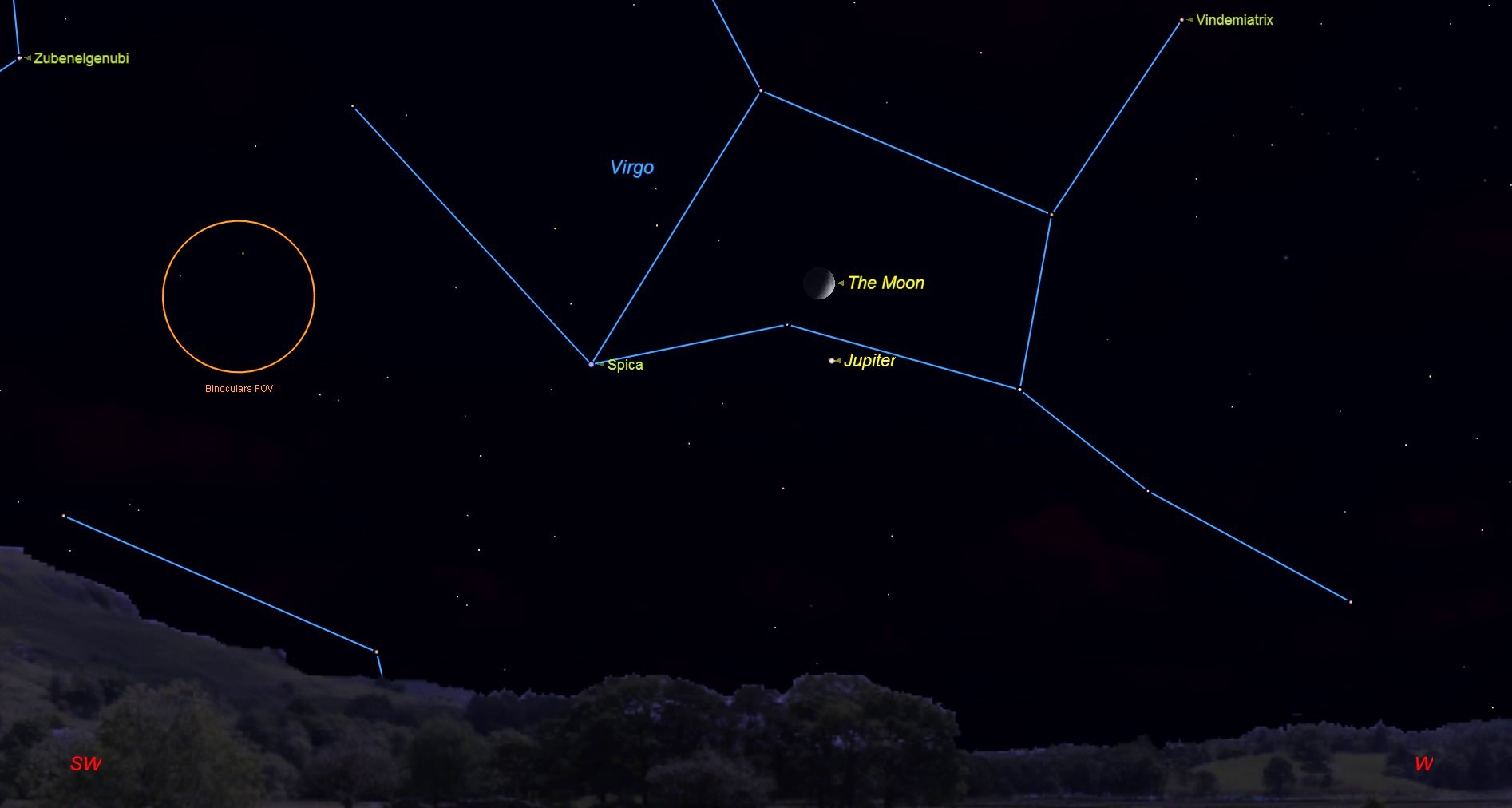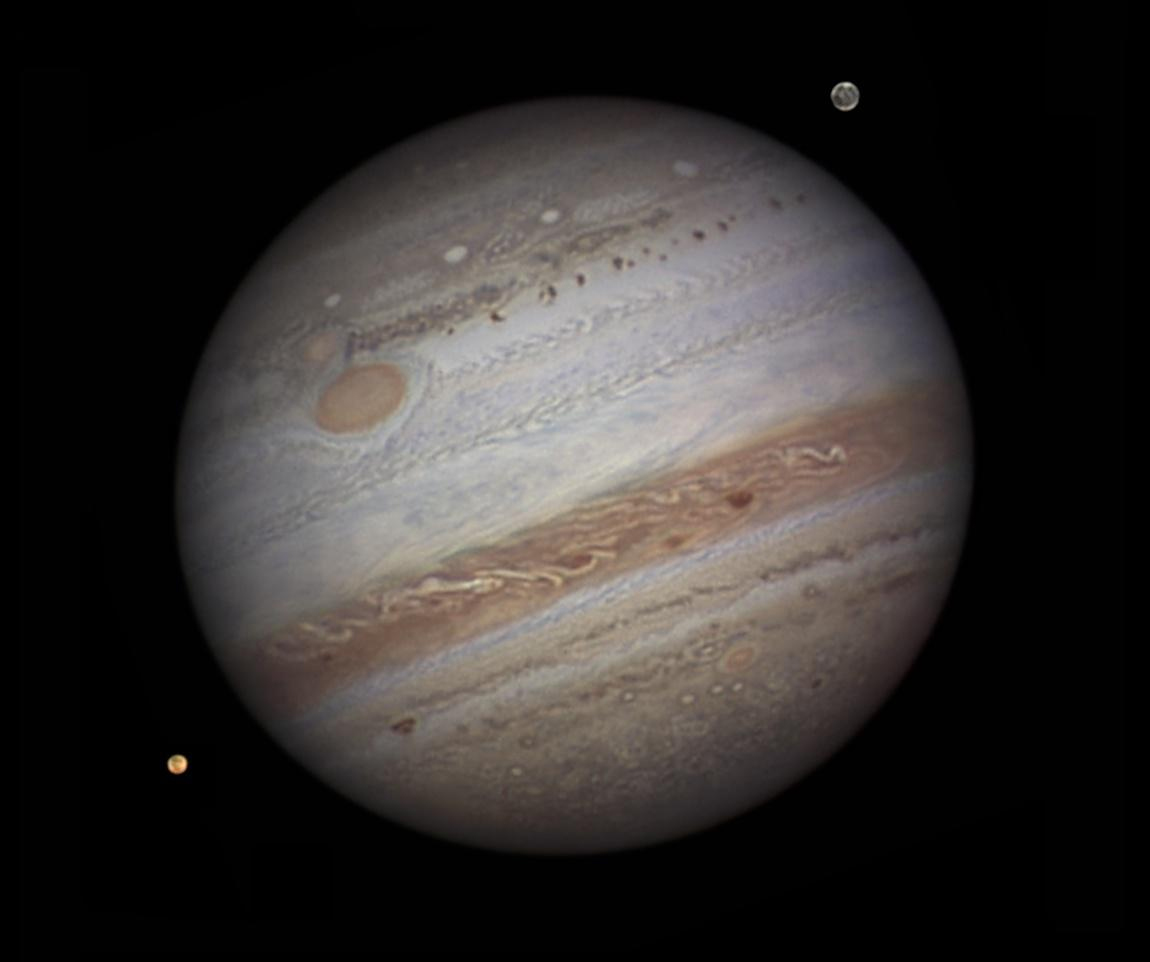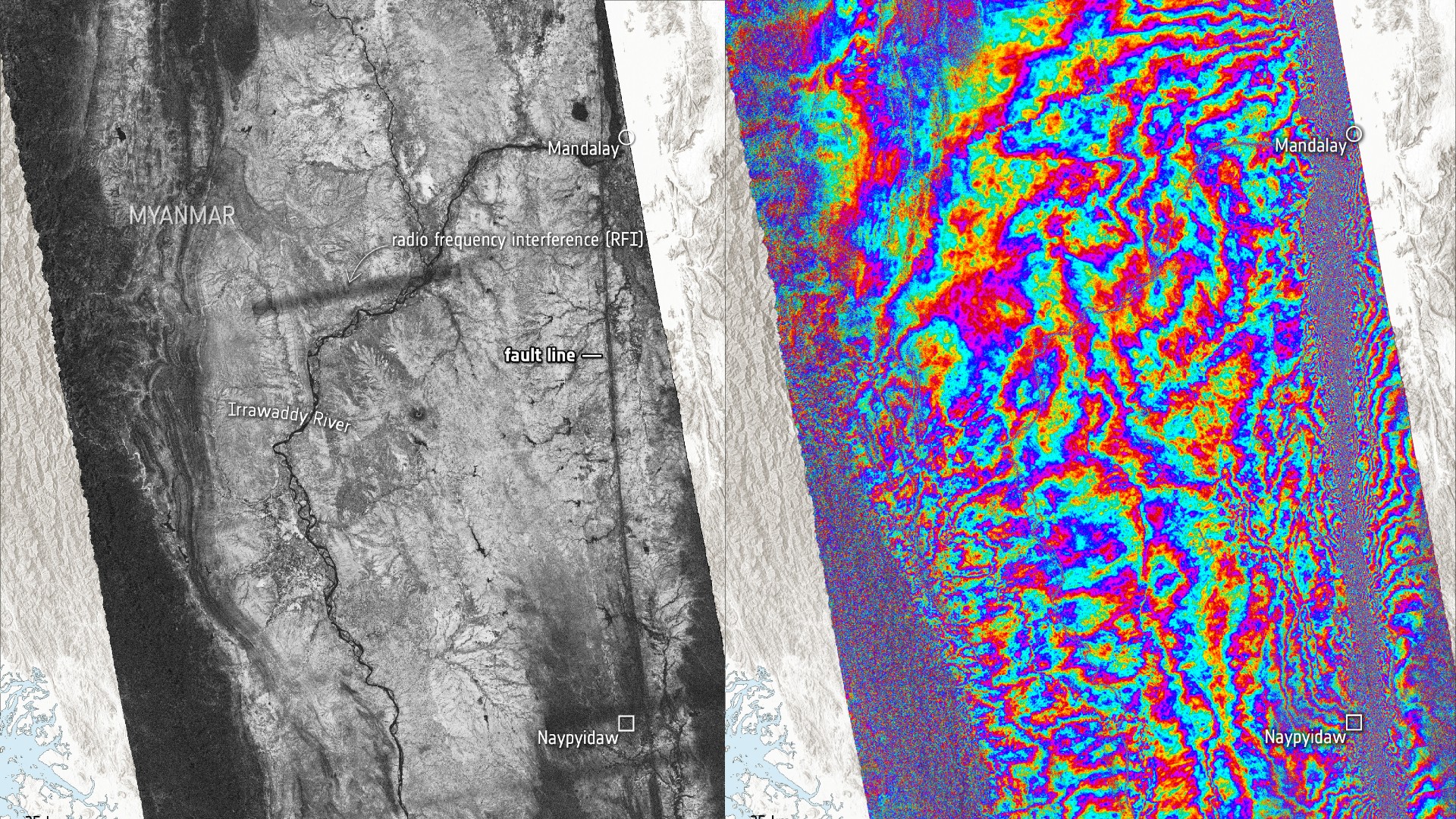
If the weather is clear in your area tonight (July 28), check out the west-southwest sky around mid-twilight, about an hour after sunset.
There, about one-quarter of the way up from the west-southwest horizon to the overhead point, you'll see an eye-catching sight: A crescent moon, 34 percent illuminated, will be visible against the darkening sky, and hovering about 3 degrees below Earth's nearest neighbor will be a brilliant, silvery white "star." But this "star" is actually the planet Jupiter. (Remember: Your clenched fist held at arm's length covers about 10 degrees.)
Because the moon and Jupiter will be the two brightest objects in the sky tonight, they'll likely attract the attention of even those who aren't consciously looking up. The celestial duo will appear to descend, finally disappearing beyond the western horizon soon after 11 p.m. local daylight time. [Night Sky Pictures: Stargazer Photos of Stars and Planets]
Jupiter is currently the brightest star-like object in the evening and among the first to come out each night at dusk. But for the rest of July and on into August, Jupiter will slowly slip farther down into the glow of evening twilight in the west-southwest. And by the first week of September, the gas giant will be setting right around the time evening twilight ends.
This month, Jupiter is falling far behind Earth in the never-ending planetary race around the sun, and the giant planet continues to move slowly eastward among the stars. Currently, Jupiter can be found in the zodiacal constellation of Virgo. Because it takes nearly 12 years to orbit the sun, Jupiter spends about a year in each of the 12 zodiacal constellations. Jupiter moved into Leo in early August of 2016 and will exit Virgo and move into Libra in mid-November.

As you admire Jupiter and the moon tonight, take note of the bluish first-magnitude star Spica, which is located about 8 degrees to the right of Jupiter. By Aug. 11, Spica and Jupiter will be separated by 6 degrees. And by Aug. 25, when the moon will again be in the general vicinity, the apparent distance between the star and planet will have shrunk to just 4 degrees, or one-half the distance compared to right now.
Jupiter and Spica will be closest to each other on Sept. 11, when they'll be separated by just 3.1 degrees. But by that time, Jupiter will be setting just over an hour after the sun, and Spica will likely be visible with binoculars against the bright twilight sky.
Get the Space.com Newsletter
Breaking space news, the latest updates on rocket launches, skywatching events and more!
Editor's note: If you have an amazing skywatching photo you'd like to share with Space.com and our news partners for a possible story or image gallery, please send your photos to our staff at spacephotos@space.com.
Joe Rao serves as an instructor and guest lecturer at New York's Hayden Planetarium. He writes about astronomy for Natural History magazine, the Farmer's Almanac and other publications, and he is also an on-camera meteorologist for Verizon Fios1 News, based in Rye Brook, N.Y. Follow us @Spacedotcom, Facebook or Google+. Originally published on Space.com.
Join our Space Forums to keep talking space on the latest missions, night sky and more! And if you have a news tip, correction or comment, let us know at: community@space.com.

Joe Rao is Space.com's skywatching columnist, as well as a veteran meteorologist and eclipse chaser who also serves as an instructor and guest lecturer at New York's Hayden Planetarium. He writes about astronomy for Natural History magazine, Sky & Telescope and other publications. Joe is an 8-time Emmy-nominated meteorologist who served the Putnam Valley region of New York for over 21 years. You can find him on Twitter and YouTube tracking lunar and solar eclipses, meteor showers and more. To find out Joe's latest project, visit him on Twitter.









